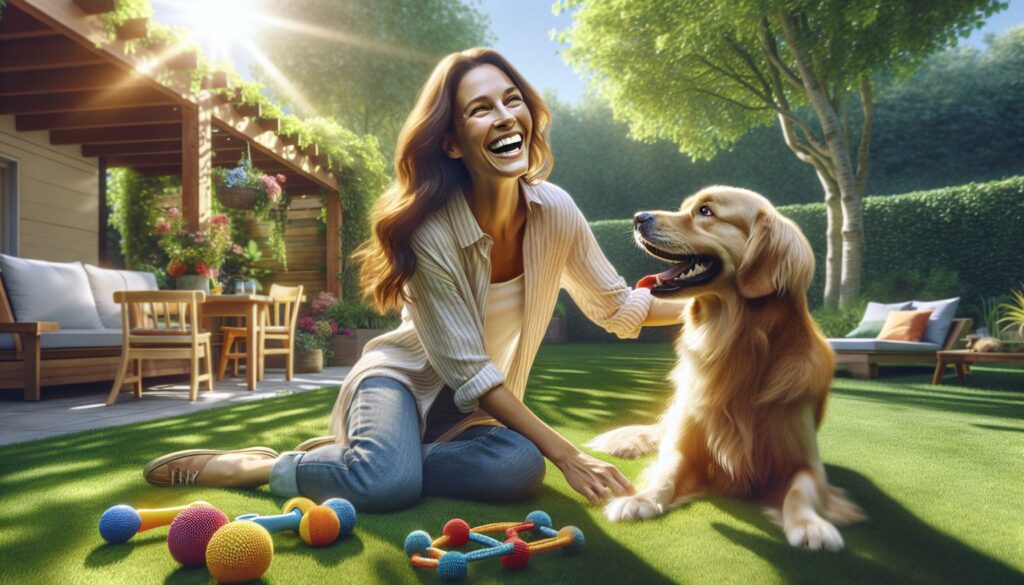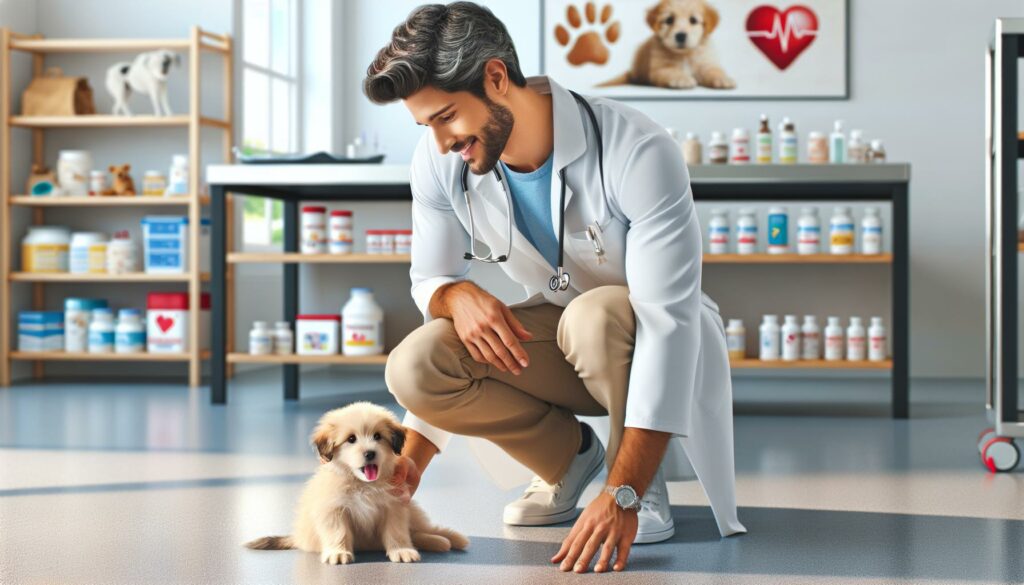As a lifelong pet owner and animal enthusiast, I’ve learned that caring for our furry friends involves much more than simply providing food and shelter. Proper pet care encompasses everything from regular veterinary checkups to mental stimulation and emotional bonding. I’ll share my expertise to help you become the best pet parent possible.
Whether you’re a first-time pet owner or have years of experience, understanding your pet’s specific needs is crucial for their wellbeing. Each animal – from dogs and cats to reptiles and birds – requires unique care routines, dietary considerations, and environmental setups. I’ve discovered that creating a comprehensive care plan tailored to your pet’s species, age, and individual personality makes all the difference in their quality of life.
Key Takeaways
- Comprehensive all pet care goes beyond basic food and shelter, requiring regular veterinary checkups, proper nutrition, exercise, and emotional bonding
- Daily routines should include consistent feeding schedules, fresh water availability, and species-appropriate exercise ranging from 20-90 minutes depending on the pet type
- Preventive healthcare is crucial, including regular vaccinations, monthly parasite prevention, dental care, and monitoring for warning signs of health issues
- Regular grooming practices and proper hygiene maintenance vary by species, with specific needs for bathing frequency, coat care, and dental cleaning
- Creating a pet-safe environment requires securing toxic substances, installing protective barriers, and maintaining appropriate indoor and outdoor temperature conditions
- Effective training and socialization should start early, incorporating positive reinforcement, consistent commands, and controlled exposure to various stimuli for well-adjusted pets
All Pet Care
Proper pet care involves establishing daily routines centered around essential needs. I’ve identified these fundamental aspects through years of experience with various pets.
Food and Nutrition
Balanced nutrition forms the cornerstone of pet health maintenance. I recommend following these key feeding practices:
- Store pet food in airtight containers at room temperature between 50-70°F
- Measure portions according to weight guidelines on packaging
- Feed adult pets 2-3 times daily at consistent times
- Provide fresh water every 12 hours in clean bowls
- Choose age-appropriate food formulas (puppy, adult, senior)
- Monitor weight changes monthly using a digital scale
| Pet Type | Daily Food Amount | Feeding Frequency |
|---|---|---|
| Small Dogs (<20 lbs) | 1/2 – 1.5 cups | 2-3 times |
| Large Dogs (>50 lbs) | 2.5 – 4 cups | 2 times |
| Adult Cats | 1/4 – 1/2 cup | 2-3 times |
- Schedule 30-60 minutes of daily exercise for dogs
- Create vertical spaces for cats with climbing trees
- Rotate toys weekly to maintain engagement
- Incorporate training exercises during playtime
- Set up obstacle courses for mental stimulation
- Plan activities based on breed energy levels
| Pet Type | Exercise Type | Daily Duration |
|---|---|---|
| Active Dogs | Walking, Running | 60-90 minutes |
| Senior Dogs | Walking, Swimming | 20-30 minutes |
| Indoor Cats | Play Sessions | 10-15 minutes, 4x daily |
Essential Health Care
Regular health monitoring forms the cornerstone of responsible all pet care ownership. I’ve learned through experience that proactive healthcare prevents costly medical issues while ensuring pets live longer healthier lives.
Preventive Care
Maintaining a preventive care schedule protects pets from common diseases through routine interventions. I recommend scheduling core vaccinations based on species-specific timelines: every 1-3 years for dogs distemper shots 3-4 weeks apart in puppies. Monthly parasite prevention includes:
- Administering flea treatments on the first of each month
- Giving heartworm medication as prescribed by the vet
- Deworming indoor cats every 3 months
- Checking ears weekly for signs of infection
- Brushing teeth 3-4 times per week using pet-safe toothpaste
- Decreased appetite lasting more than 24 hours
- Lethargy combined with behavior changes
- Frequent vomiting or diarrhea episodes
- Excessive scratching indicating skin conditions
- Changes in urination patterns or frequency
- Breathing difficulties or persistent coughing
- Sudden weight loss or gain over 2 weeks
| Health Issue | Warning Signs | Time to Seek Vet Care |
|---|---|---|
| UTI | Frequent urination | Within 24 hours |
| Ear Infection | Head shaking | Within 48 hours |
| GI Issues | Multiple vomiting episodes | Same day if severe |
| Skin Problems | Hot spots visible | Within 72 hours |
| Respiratory Issues | Labored breathing | Immediate care |
Pet Hygiene and Grooming
Regular grooming maintains pet health through preventive care by addressing hygiene needs before they become problems. I’ve developed effective grooming practices based on extensive experience with various pet species.
Grooming Tools and Supplies
Essential pet grooming tools include species-specific brushes, combs, nail clippers, ear cleaners, shampoos, and dental supplies. I recommend keeping these items organized in a dedicated grooming kit:
- Metal slicker brushes for removing loose fur and mats from long-haired pets
- Pin brushes for detangling medium-length coats without causing discomfort
- Rubber curry combs for short-haired pets to remove dead skin cells
- Professional-grade nail clippers sized for specific pet types
- Styptic powder to stop minor bleeding from nail trimming
- Electric clippers with #10 blades for removing matted fur
- Microfiber towels for drying after baths
- Pet-specific ear cleaning solutions with cotton balls
Bathing and Dental Care
Pet bathing frequency varies by species, coat type, and lifestyle:
| Pet Type | Bath Frequency | Dental Care Frequency |
|---|---|---|
| Dogs | Every 4-8 weeks | Daily brushing |
| Cats | Every 4-6 weeks | 2-3 times weekly |
| Rabbits | 2-4 times yearly | Monthly check |
| Guinea Pigs | Monthly | Weekly check |
Key bathing practices:
- Use lukewarm water at pet-safe temperatures (100-102°F)
- Apply pet-specific shampoo from neck to tail
- Rinse thoroughly to prevent skin irritation
- Dry completely with clean towels
- Brush with pet-specific toothpaste
- Clean teeth at fixed times to establish routine
- Monitor for signs of dental disease: bad breath, bleeding gums
- Schedule professional cleanings based on veterinary recommendations
Pet Safety and Environment
I’ve discovered that creating a secure environment for pets involves both indoor safeguards and outdoor precautions. Pet-proofing living spaces and establishing safety protocols prevents accidents and ensures peace of mind.
Creating a Pet-Safe Home
Pet-safe homes eliminate common hazards through strategic organization and secure storage. Here are essential safety measures:
- Secure toxic substances in locked cabinets including cleaning products medications household chemicals
- Install protective barriers around fireplaces pools electrical cords
- Remove toxic plants such as lilies sago palms aloe vera
- Store small objects like buttons coins rubber bands out of reach
- Use childproof latches on cabinets containing dangerous items
- Keep trash bins covered secured to prevent scavenging
- Install window screens durable enough to prevent falls escapes
- Set water heater temperatures below 120°F to prevent scalding
- Install secure fencing at least 6 feet tall with buried bottom edges
- Check yard perimeters weekly for gaps escape routes
- Remove toxic plants mushrooms from accessible areas
- Store garden tools chemicals in locked sheds
- Maintain pool covers safety barriers around water features
- Use pet-safe ice melters during winter conditions
- Install adequate outdoor lighting for nighttime visibility
- Create shaded areas protecting from extreme weather
- Keep vaccinations current for protection against outdoor risks
- Use appropriate identification including microchips collar tags
- Monitor outdoor temperatures limiting exposure during extreme weather
| Weather Condition | Safe Temperature Range | Maximum Time Outside |
|---|---|---|
| Hot Weather | 70-80°F (21-27°C) | 30 minutes |
| Cold Weather | 45-65°F (7-18°C) | 45 minutes |
| Ideal Conditions | 65-75°F (18-24°C) | 1-2 hours |
Training and Socialization
Effective training and proper socialization create well-adjusted pets who respond positively to commands and interact appropriately with others. Based on my experience working with various pets, I’ve developed proven methods for establishing good behavior and social skills.
Basic Commands and Discipline
Training begins with five essential commands: sit, stay, come, leave it and down. I establish clear communication through consistent hand signals paired with verbal cues, rewarding correct responses with immediate treats or praise. The training schedule includes:
- Practice sessions lasting 5-10 minutes, 3 times daily
- Command repetition in different environments
- Positive reinforcement using treats, toys or verbal praise
- Correction through redirecting unwanted behaviors
- Clicker training for precision timing
- Hand signal training before adding voice commands
Social Skills Development
Socialization exposes pets to different stimuli during their critical development periods, creating confident and well-adjusted animals. I implement a structured socialization program that includes:
- Controlled introductions to new people weekly
- Supervised pet-to-pet interactions in neutral spaces
- Exposure to various sounds like vehicles, appliances or storms
- Introduction to different walking surfaces like grass, gravel or wood
- Participation in group training classes
- Regular visits to pet-friendly public spaces
- Positive experiences with handling by different people
- Gradual exposure to new environments
| Age | Social Skills Focus | Training Goals |
|---|---|---|
| 8-16 weeks | Basic exposure | Environment familiarity |
| 4-6 months | Basic commands | Response reliability |
| 6-12 months | Advanced training | Complex commands |
| 12+ months | Ongoing practice | Behavior maintenance |
Knowledge and Love
Taking all pet care is a rewarding journey that requires dedication knowledge and love. I’ve shared my expertise to help you create the best possible life for your furry companion through proper nutrition exercise healthcare grooming safety and training.
Remember that every pet is unique and what works for one might not work for another. I encourage you to use these guidelines as a foundation while paying attention to your pet’s individual needs and personality.
By implementing these comprehensive care strategies you’ll build a stronger bond with your pet and provide them with a happy healthy life. Your commitment to being a responsible pet owner will make a significant difference in your companion’s well-being for years to come.


